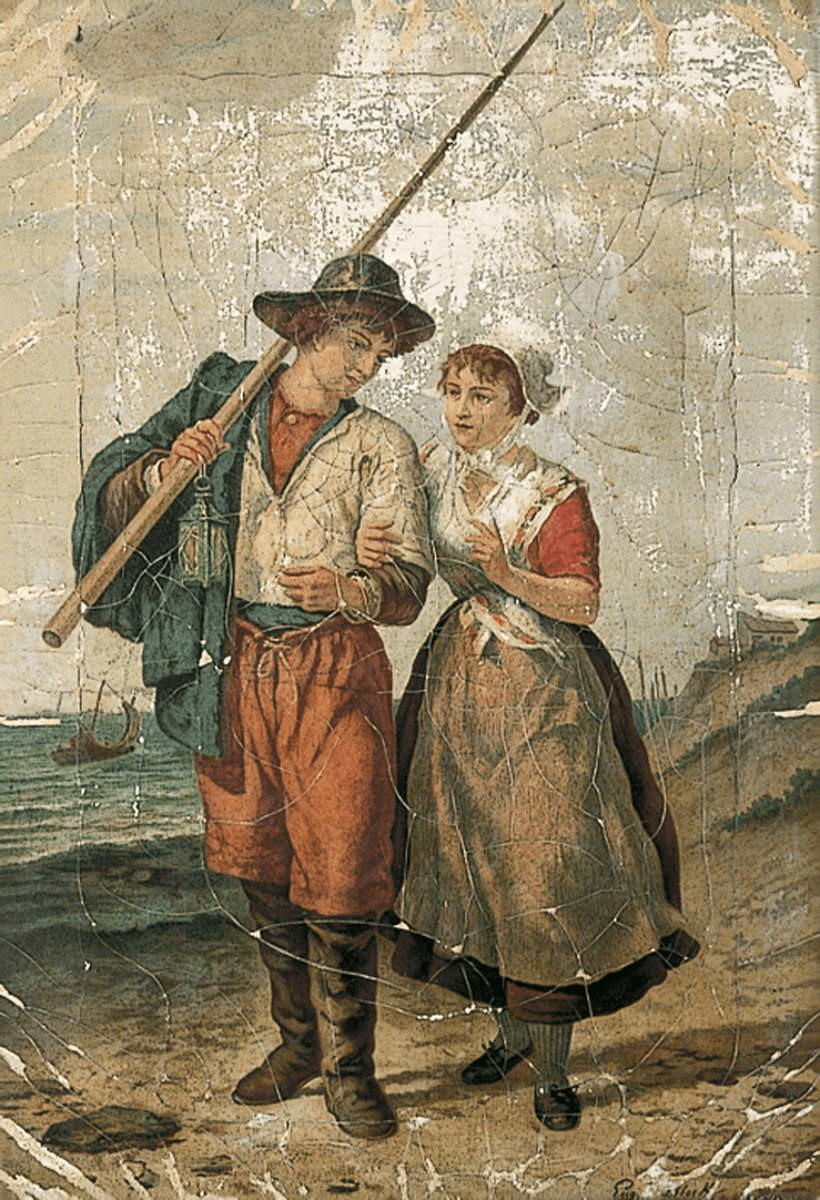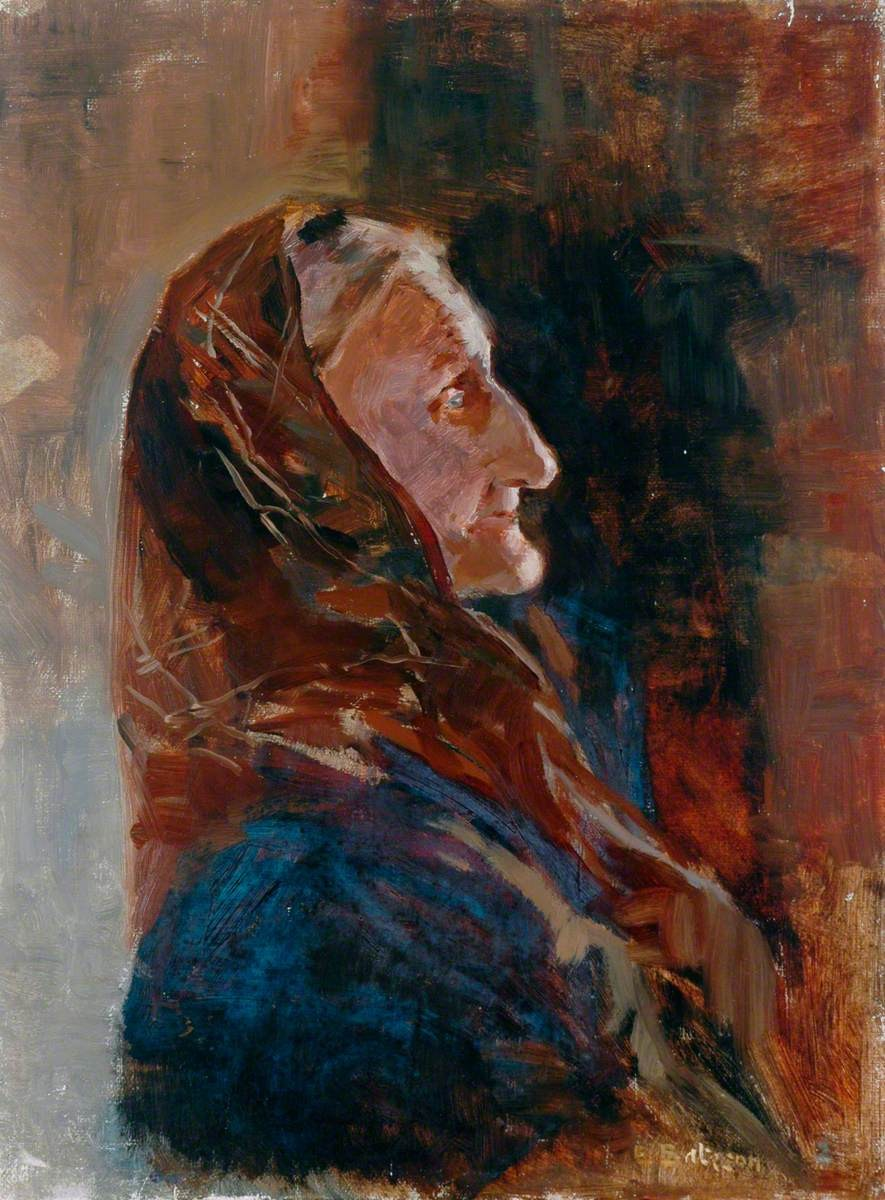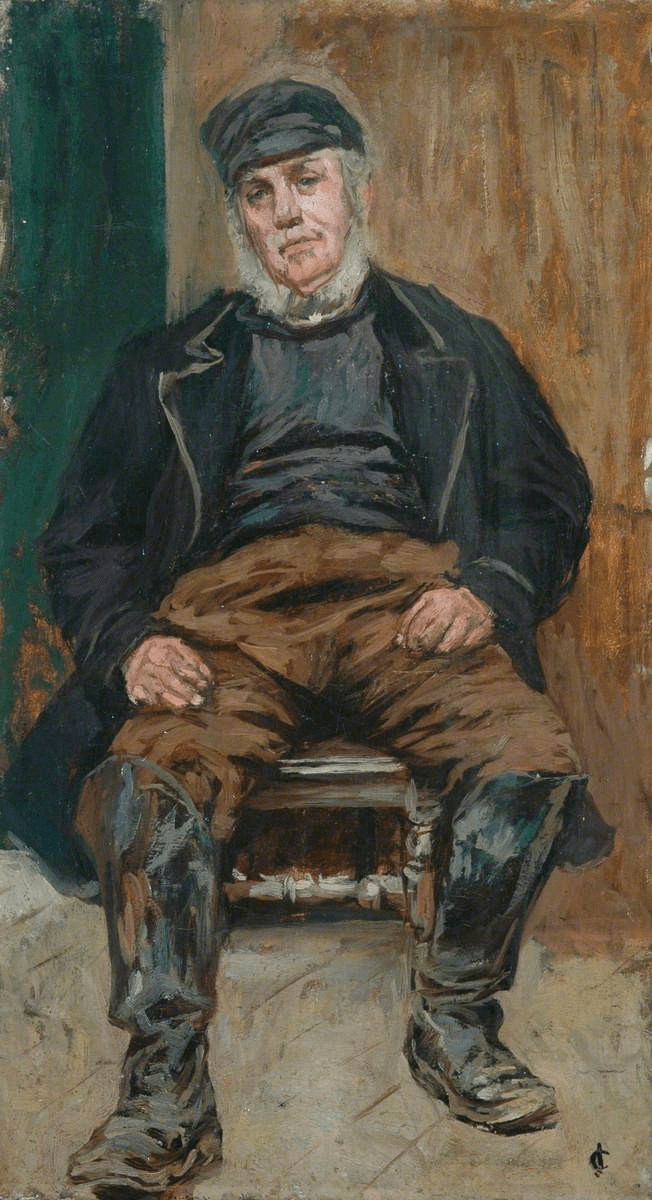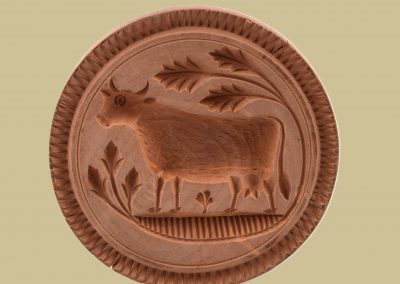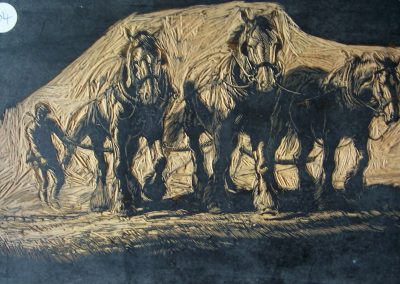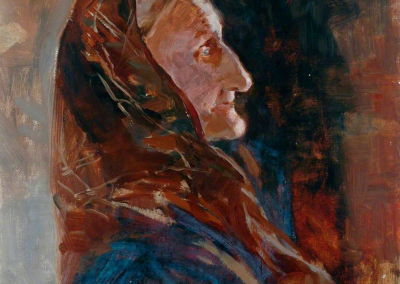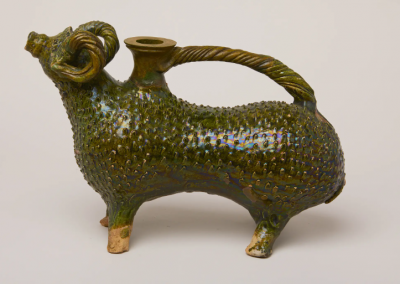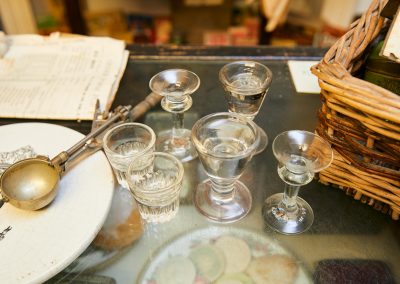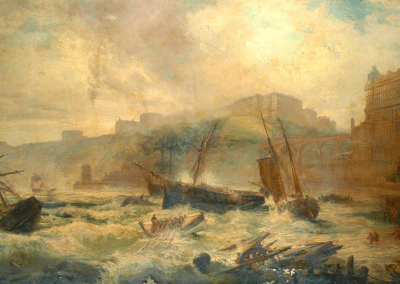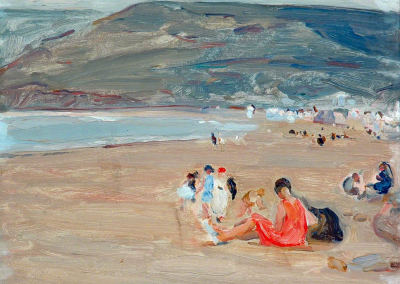Explore a selection of ‘Fisher Folk’
Having a portrait painted was often expensive, which is why most surviving portraits tend to be of the wealthier members of society.
Sometimes portraiture was even used to demonstrate wealth and status, but it could also capture a person’s likeness in a time before easy and affordable photography. However, some artists have been interested in painting people of lower status, including members of the fishing community.
The Kipper Woman by Edith Bateson
Pannett Art Gallery, Whitby
Edith Bateson (1867 – 1938) is best remembered now for her skilful bronze statuettes and sculpted grouped figures, unusual for a woman at the time. She trained in London at the Royal Academy Schools, accrued a number of prizes, and showed works in London and Paris during her career. However, for a time she was connected with the Fylingdales Group of Artists based in Robin Hood’s Bay on the North Yorkshire Coast. The group’s name derives from the civil parish in which Robin Hood’s Bay is situated.
The group was founded in 1925 with an aim of exhibiting artwork representing Yorkshire. As well as coastal scenes, they also painted local characters on occasion, including the fisherfolk, as artists in Staithes had done in earlier decades.
Kippers – dried or smoked herring – were typically eaten for breakfast and the preparation would have provided an livelihood for working men and women along the coast.
The unnamed, elderly kipper woman, is wearing a dark headscarf typical of working women. Her age reminds us of the lack of state-provided social care and pensions in this period. She is shown in an unusual profile view, which emphasises a prominent chin. The edges of the canvas seem unfinished in nature. The canvas measures 40.5cm (h) x 30.5cm (w).
A Staithes Fisherman, by James Charles
Pannett Art Gallery, Whitby
The Fylingdales artists were not the first to be attracted to the North Yorkshire coast. Just a couple of decades before them, artists had been drawn to the fishing village of Staithes.
Though now known as the ‘Staithes Group’, it was never a rigidly organised group or artist’s colony as was formed elsewhere in the country, but it did bring together individuals keen to explore contemporary life. At some point, though not part of this ‘Staithes group’, James Charles was clearly drawn to the village, spending his winters in Yorkshire. This respected artist exhibited at the Royal Academy and respectable Grosvenor Gallery, and settled in Chelsea.
In this portrait, he captures the exhaustion of fishing life, as the unnamed Staithes fisherman slumps back in a chair, too tired even to remove his boots. It feels as though the artist and viewer have stumbled into a personal moment.
This oil on canvas painting is 52cm (h) x 29cm (w)
‘Fisher Folk’, by Eugène-François de Block
The Mercery Art Gallery Collection, Harrogate
This 19th-century Belgian work called ‘Fisher Folk’ depicts a couple and makes an interesting comparison to the works from the Yorkshire coast. Does the couple look tired like the Staithes fisherman, or something else? By Eugène-François de Block (1812–1893), it is in the collection of The Mercer Art Gallery, Harrogate.
De Block was well known for his representations of everyday life, known as ‘genre paintings’. Look at the characters’ body language. With their heads angled together, creating a sense of connection though they are not looking directly at each other. De Block has included symbols to represent their working lives.
Painted in oil on canvas, this work measures 65cm (h) by 45cm (w). Unfortunately, as you can see, the canvas has suffered damage.
Talking Points
Talk about the paintings of the kipper woman and the fisherman from Staithes
Why do you think artists like to paint the local working population?
Do you think the ‘kipper woman’ would have been pleased that Bateson wanted to paint her?
What aspects of the paintings seem unfinished?
Do you think they are flattering portrayals of the subjects?
Do you think they are accurate? Which painting do you think is most accurate?
Do you think the ‘kipper woman’ and Staithes fisherman would have liked their portraits?
Why do you think Bateson chose such dark colours for the painting? How do the colours affect our response?
Why do you think the artists not to use the names of their subjects in the title?
Why do you think most portraits tend to show wealthier people?
In the Classroom
Hotseat
Interview a member of the class in role as Edith Bateson. Why did she paint ‘The Kipper Woman’? How did she approach her subject matter? Is she pleased with her portrayal?
Interview the fisherman from Staithes about his day. What sort of experiences had he had?
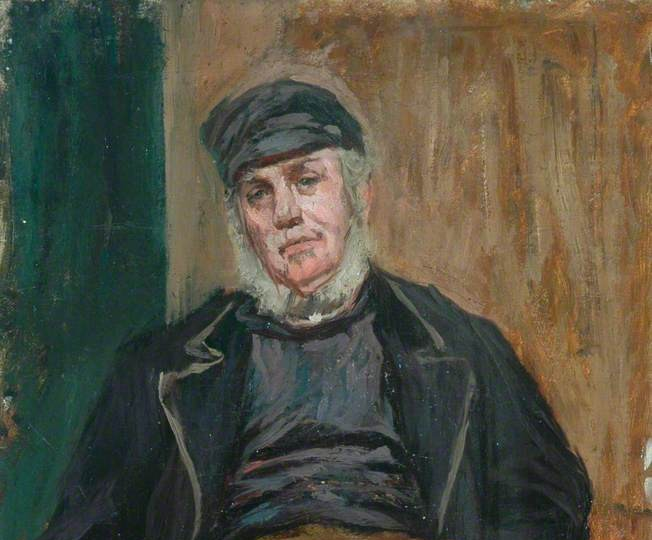
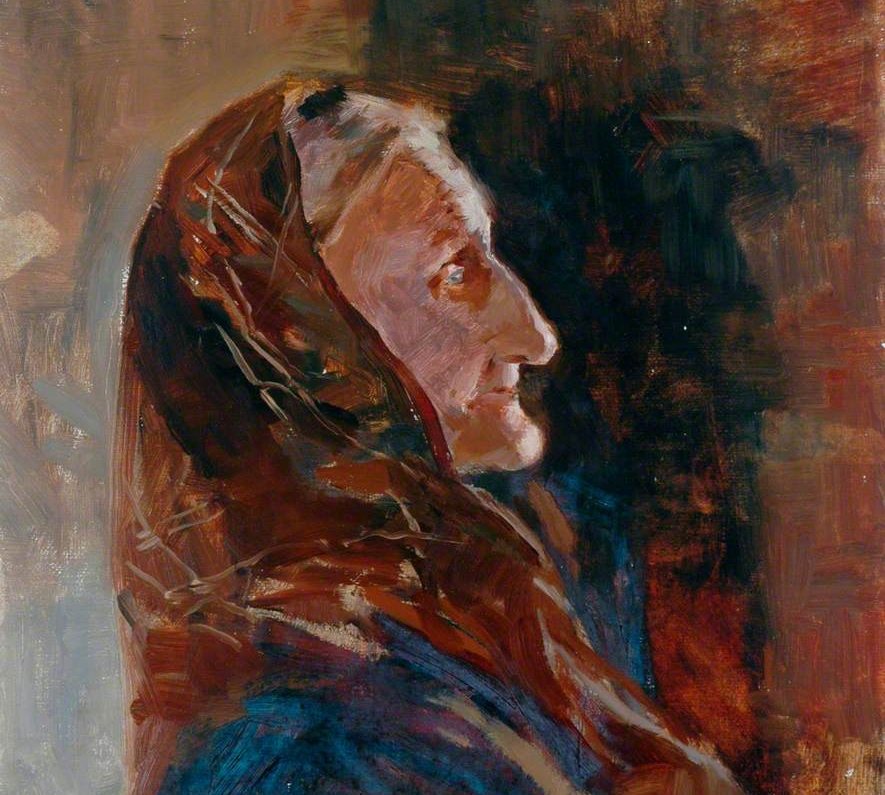
Hands on History
You can see more artwork from both the Fylingdales Group and the Staithes Group at Pannett Art Gallery.
The Mercer Art Gallery has a programme of changing exhibitions. Click on the pins on the maps to find out more about these venues.
Explore more about working lives through artworks
Discover more art and objects from the coast

